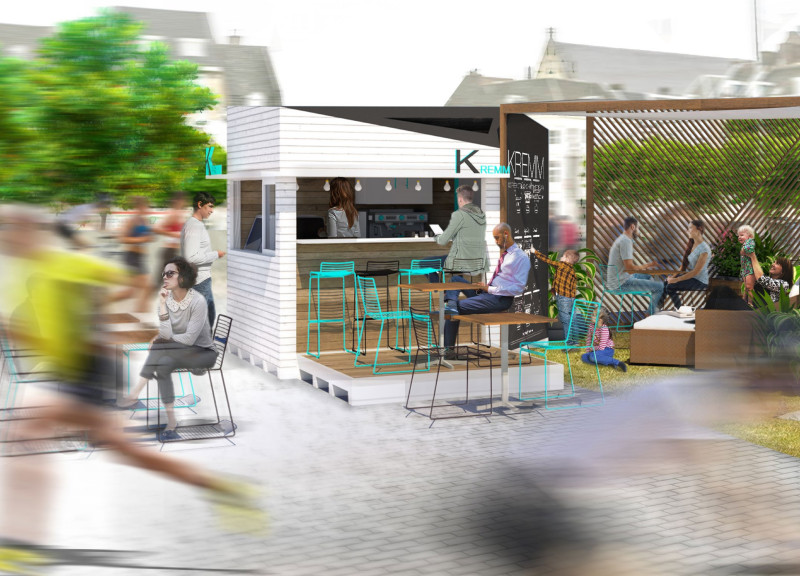5 key facts about this project
The Kremm de la Kremm project reimagines a coffee kiosk as a community space within an urban environment. It functions to encourage social interaction through the shared love of coffee, creating a welcoming atmosphere that differs from traditional café settings. The design unfolds in three distinct phases, allowing the kiosk to grow and adapt while strengthening its connection to the local community.
Phase One: Coffee Haus Installation
The project begins with the Coffee Haus Installation, which establishes a friendly entry point for customers. By opening a primary window, the design prioritizes accessibility, inviting people to step inside. This initial phase aims to create an inviting setting that encourages interaction among visitors.
Phase Two: Coffee Bar Expansion
In the next phase, known as the Coffee Bar Expansion, a second window is added, which improves service and includes a public seating area. This step enhances the social aspects of the kiosk, making it feel more like a conventional coffee house. With this design, longer visits are encouraged, promoting community engagement and attracting a broader audience.
Phase Three: Coffee Garden and Community Space
The final phase, called the Coffee Garden and Community Space, introduces outdoor seating and areas for gatherings. This expansion not only facilitates socializing but also allows the kiosk to serve as a versatile hub for various community activities. The design considers how the space can stay relevant, ensuring it can be effectively used even when the coffee kiosk is closed.
Construction and Materiality
The project employs specific construction techniques and materials to enhance usability and visual appeal. Structural Insulated Panels (SIPs) provide good insulation and simplify the building process. White siding allows natural light to fill the space, creating an open feel. Chalkboard paint serves as a canvas for communication through signage, while reclaimed wood adds warmth. The skid base construction offers mobility, making the kiosk adaptable within the urban setting.
Kremm de la Kremm exemplifies how design can redefine public space, focusing on connections and community participation. The carefully crafted windows and outdoor seating create a lively atmosphere suitable for gathering and conversation.



























